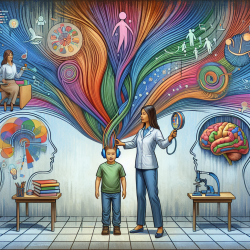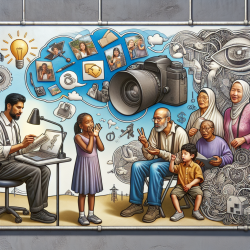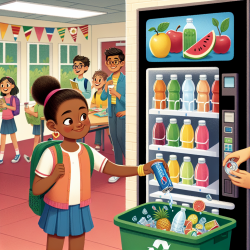Introduction
As practitioners in the field of speech-language pathology, we are constantly seeking ways to enhance our therapeutic approaches to achieve the best outcomes for children. One area of interest that has emerged from recent research is the phenomenon of synesthesia, particularly the subtypes of mirror-touch and ticker tape experiences. These unique perceptual experiences provide insights into how individuals process sensory information and can inform therapeutic practices.
Understanding Synesthesia
Synesthesia is a condition where stimulation of one sensory pathway leads to automatic, involuntary experiences in a second sensory pathway. The study titled Mirror-touch and ticker tape experiences in synesthesia explores the prevalence and characteristics of these experiences in a large population sample.
The research found that synesthetes reported higher rates of mirror-touch and ticker tape experiences compared to non-synesthetes. Mirror-touch involves experiencing a tactile sensation on one's own body when observing another person being touched, while ticker tape refers to the automatic visualization of spoken words or thoughts, akin to a teleprompter.
Implications for Practitioners
Understanding these phenomena can have significant implications for practitioners. Here are some key takeaways:
- Enhanced Sensory Awareness: Recognizing that some children may experience sensory information differently can help tailor therapeutic interventions to better suit their needs.
- Individualized Approaches: Practitioners can develop more personalized strategies by considering the unique sensory experiences of each child, especially those with synesthetic traits.
- Improved Communication: Awareness of ticker tape experiences can aid in developing communication strategies that align with how a child processes verbal information visually.
Encouraging Further Research
While the study provides valuable insights, it also highlights the need for further research to understand the underlying mechanisms of synesthesia and its impact on sensory processing. Practitioners are encouraged to explore these areas to enhance their understanding and improve therapeutic outcomes.
Conclusion
By integrating findings from synesthesia research into practice, speech-language pathologists can better address the diverse needs of children, leading to more effective and personalized interventions. As we continue to explore these phenomena, we can unlock new pathways to support children's development and communication skills.
To read the original research paper, please follow this link: Mirror-touch and ticker tape experiences in synesthesia.










